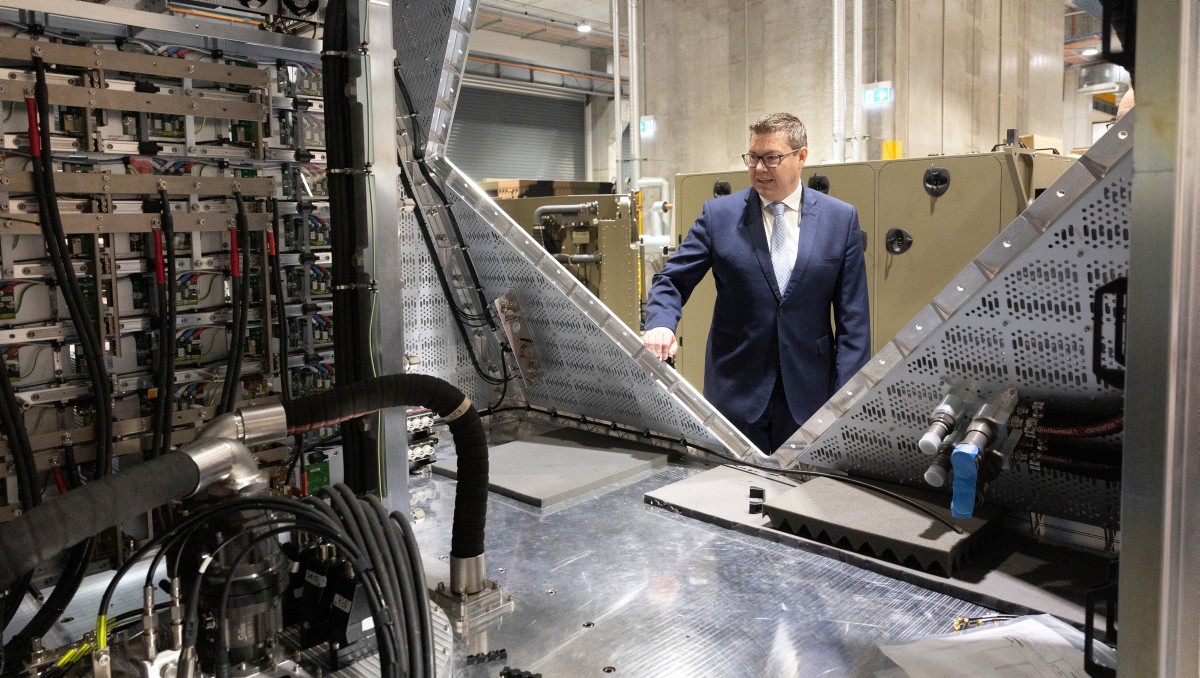Economies of Scale Provided by Automated Solutions
Smarter Deception
Introduction
In releasing the Defence Strategic Review, the Australian Government announced a pivotal (and not unforeseen) clarification in Australia’s defence strategy. Notably, the Review directs Australia to adopt a strategy of denial intended to defend Australia by influencing an adversary’s ‘state of mind’ such that it changes ‘its risk assessment and, therefore, decision-making’.[1] However, the Review also identifies the necessary but ambitious related capability reform will need to be enacted with fiscal discipline.[2] So, with demands for the ADF to do more, with less, how can the organisation become more resilient, more lethal and more prepared to meet threats beyond Australian sovereign territory to secure the homeland? The answer: by equipping the ADF with high-impact, low-cost capabilities able to enact asymmetric strategies. Specifically, a deliberate deception plan supported by robotics and autonomous systems (RAS).
Asymmetric opportunities presented by deception
Denial has featured in Australian strategy for decades. The first formal introduction of the concept was included in the 1986 Dibb Defence Review that called for ‘anti-access denial’.[3] Other denial concepts include area-denial (popularised by Hugh White) and the amalgamation of both in ‘anti-access / area-denial’ (A2AD).[4] Holding less historic credence, but no less future importance, is a third conceptualisation of denial grounded in dissuasion. All involve different platforms and employment methods. The first two denial concepts rely on high-cost and valuable assets, with potentially long lead times for integration into the ADF. Denial by dissuasion, however, is grounded in the strategic interaction between forces – often at the psychological level. J. O. Langtry and Desmond Ball develop dissuasion by denial further in their concept of ‘disproportionate response’. They state;
‘‘Disproportionate response’ within the context of strategic deterrence is intended to progressively incorporate into the defence forces specific capabilities that will cause a potential aggressor to respond disproportionately in terms of the costs in one or all of money, time, material and/or manpower in order to gain the advantage’.[5]
Within this framework, deception presents crucial opportunities for misleading an adversary and reinforcing preconceptions/perceptions that persuades them to respond disproportionately and to their disadvantage.[6] For example, according to US Doctrine (JP 3-13.4) functions of deception include causing:
- Ambiguity, confusion or misunderstanding
- Misallocation of adversary personnel, fiscal and material resources
- An adversary to reveal strengths, dispositions and future intentions
- Wastage of adversary combat power
- An adversary to be conditioned to particular patterns of friendly behaviour[7]
Such opportunities are particularly important when force ratios are unfavourable (as possibility hinted in the DSR that ‘Australia does not have effective defence capabilities relative to higher threat levels’[8]) and when the adversary has known preconceptions that can be exploited.[9] Capitalising on these qualities will inherently increase the asymmetric value of a small and focused ADF for operations across the spectrum of conflict, but specifically for changing an adversary’s state of mind when considering targeting Australian sovereign territory.
US Ghost Army – World War II
Deception covers a number of techniques that range from staged media events and social media posts to the employment of military decoy targets. During WWII, the US conducted one of the most sophisticated and successful deception campaigns under the appropriately named ‘Ghost Army’. Formerly recognised as 23rd Headquarters Special Troops, the Ghost Army was established to deceive adversaries in Europe.[10] Conducting over 20 individual deception campaigns, the 1,023 of 23rd Headquarters Special Troops used false illustrations and radio communications, inflatable platforms and pre-recorded sounds to emulate a force equivalent to 40,000 personnel.[11] It is believed this unit saved an estimated 15,000-30,000 lives across critical missions such as D-Day. The asymmetric value of deception is clear, with declassified US Army documents offering confirmatory evidence that ‘[r]arely, if ever, has there been a group of such a few men which had so great an influence on the outcome of a major military campaign’.[12] In a similar manner, deception employed by land forces, integrated across domains, could act as a force multiplier for Australia and increase survivability of conventional capabilities and infrastructure – saving lives and deterring threats before they manifest.
Incorporating RAS to deception plans
Near-pervasive intelligence, surveillance and reconnaissance (ISR), the diffusion of information platforms and increasing cultural diversity in Australia’s population make implementing the same techniques employed by the Ghost Army ultimately unfeasible today (based on both risk and likelihood of success). However, it is true that while the nature of war remains the same the character of war evolves. The techniques may not be the same (especially for concealing physical deceptions), but the tactics of deception are.
In adapting deception techniques, current robotics and autonomous systems (RAS), combined with advanced synthetic materials, are capable of advanced deception tactics. As outlined by Army’s Robotics and Autonomous Systems Implementation and Coordination Office (RICO), RAS platforms offer deception capabilities through their ‘…ability to generate EW, disguise radar cross sections and spoof adversaries with a degree of previously unobtainable persistence’.[13] These concepts would enable the ADF to increase survivability of conventional forces, reduce opportunities to target Australian forces, as well as attract an adversary into positions of disadvantage. Other RAS deception concepts include loitering munitions and decoys that could be used to delay an adversary advance or assault, conceal friendly plans, movements and/or military capabilities.[14] In particular, RAS decoys employed, en-masse, could absorb adversary resources (including their time) and possibly unmask their positions by mimicking real, ISR-consistent and mobile conventional platforms all while conducting ISR collection.[15] Such realism offers an important opportunity for the ADF to overwhelm adversary cognitive abilities – both within the chain of command and adversary autonomous processing systems.
While it is not proposed that deception is without cost, the use of RAS to contribute to deception campaigns offers asymmetric force effects based on disposable platforms and options the ADF can implement now. This is especially true when considering opportunities for integration with industry and enhancing security requirements. Combined RAS and deception serve to enact Australia’s strategy of denial within a resource constrained environment where strategic risks to the ADF must be mitigated in the near term.
Conclusion
A deception operation consists of techniques that convey a story to influence adversary thinking and action in support of a higher objective. As the US demonstrated during WWII, one of the most successful deception campaigns was undertaken to give the appearance the land force was larger and more mobile than in reality. With current RAS technologies, the ADF could undertake sophisticated deception campaigns that tell the story of a more resilient, more lethal and more prepared force in support of Australia’s strategy of denial. In doing so, the ADF can support the defence of Australia by influencing decision-making and behaviour of an adversary before a threat is realised on our sovereign territory.
This article is a submission to the Spring Series 2023 Short Writing Competition, 'Army’s approach to accelerated preparedness'.
[1] Australian Government, 2023, Defence Strategic Review 2023 (Canberra: Commonwealth of Australia)
[2] Australian Government, 2023, Defence Strategic Review 2023 (Canberra: Commonwealth of Australia)
[3] Paul Dibb, 1986 Review of Australia’s Defence Capabilities: Report to the Minister for Defence (Canberra: Commonwealth of Australia)
[4] Hugh White, September 2012, ‘A Middling Power: Why Australia’s Defence Is All at Sea’, The Monthly
[5] John O. Langtry and Desmond Ball, 1979, Controlling Australia’s Threat Environment: A Methodology for Planning Australian Defence Force Development, (Canberra: Australian National University Strategic and Defence Studies Centre)
[6]Joint Chiefs of Staff, 26 January 2012, Joint Publication 3-13.4 – Military Deception; Ministry of Defence, March 2020, Allied Joint Publication 3.10.2 – Allied Joint Doctrine for Operations Security and Deception
[7] Joint Chiefs of Staff, 26 January 2012, Joint Publication 3-13.4 – Military Deception
[8] Australian Government, 2023, Defence Strategic Review 2023 (Canberra: Commonwealth of Australia),
[9] Ministry of Defence, March 2020, Allied Joint Publication 3.10.2 – Allied Joint Doctrine for Operations Security and Deception
[10] Kellie B. Gormley, 05 July 2022, ‘How the Ghost Army of WWII used art to deceive the Nazis’, Smithsonian Magazine; The Ghost Army Legacy Project, n.d., 23rd Headquarters Special Troops
[11] Kellie B. Gormley, 05 July 2022, ‘How the Ghost Army of WWII used art to deceive the Nazis’, Smithsonian Magazine
[12] Kellie B. Gormley, 05 July 2022, ‘How the Ghost Army of WWII used art to deceive the Nazis’, Smithsonian Magazine
[13] Australian Army, August 2022, ‘Generating Mass and Scalable Effects’, Robotic & Autonomous Systems Strategy v2.0, (Canberra: Department of Defence)
[14] Sydney J. Freedberg Jr., 23 August 2019, ‘Army Explores Robot Decoys & Cannon-Fired Jamming Pods', Breaking Defense; Peter Layton, 31 August 2023, ‘US to Build Robot Army to Counter China’s Growing Power’, Science Alert
[15] Paul Scharre, 25 September 2014, The Coming Swarm: The Cost-Imposing Value of Mass
The views expressed in this article and subsequent comments are those of the author(s) and do not necessarily reflect the official policy or position of the Australian Army, the Department of Defence or the Australian Government.
Using the Contribute page you can either submit an article in response to this or register/login to make comments.



